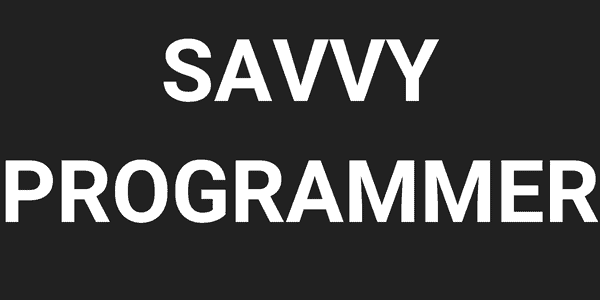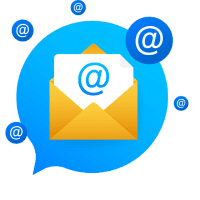If you are a programmer, or want to be one, this is the blog post for you!
I’ve compiled a list of the top 25 programming trends that I think will shape the industry.
This isn’t just speculation – I’ve backed it up with statistics and analysis.
So whether you are a beginner or an experienced programmer, there is something for everyone in this article.
Read this blog post today to learn more about the top 25 programming trends!
1. Python
According to Statista, Python is the fourth most popular programming language, chosen by 44.1% of developers.
2. Kotlin
The popularity of Kotlin for creating Android apps is phenomenal. It is also used for the JVM and is 100% Java-compatible, so it can be used with both.
3. Scala
Scala is included in Statista’s list of programming languages, but only achieves 3.6% popularity. Many engineers believe that future programming languages must contain Scala, a powerful and promising language.
4. JavaScript
67.7% of developers chose JavaScript. JavaScript (JS) is a dynamic language that supports object-oriented, imperative, and declarative programming techniques.
5. Swift
Swift is the major platform for mobile app development. Statista gives Swift just 5.9%, indicating that this language is not multipurpose.
6. Go
In terms of grammar, several developers compare Go to the C of the twenty-first century. Statista ranks Go as the 12th most popular programming language, selected by 8.8% of developers. It is an open-source programming language.
7. Java
Java is ranked 5th among the top 10 future programming languages. Even our mothers heard about creating code in Java, despite they have no idea how it works.
8. Ruby
No. 13 on Statista’s list of the greatest new programming languages, but potentially no. 1 in web application
9. C and C++
By Statista, C and C++ are the ninth and 10th best programming languages. Their names look the same, but there is a big difference. C is a middle-level language, and C++ is a high-level one.
10. C#
Most developers choose C#, which is 7th on the list, with 31.4 percent choosing it. A lot of people who are both new and seasoned programmers use C# as their main language.
11. Multi-Cloud
When it comes to public cloud providers, there’s no question who is the best in the business. According to Statista, Amazon Web Services is the leader in the cloud market with 32%. Microsoft has a 20% share of the market, and Google Cloud comes in third with a 9% share. It’s more likely to be in the top three in 2021, too.
12. Blockchain
Blockchain is a contemporary disruptive technology utilized in the Cryptocurrency idea. Per PR Newswire, it will reach $30.7 billion by 2027, a 43 percent compound annual growth rate.
13. Quantum Computing
Quantum computing is undeniably the most revolutionary technology of our time. It is expected to affect all sectors. According to recent IBM research blogs, a 1,121 qubit IBM Quantum Condor processor will be available in 2023. Quantum computers are the supergenius mathematicians like Euler or chess players that can play with about 50 ordinary chess players at simultaneously.
14. Deep Learning
According to Globe News Wire, the deep learning industry will reach $93.34 billion by 2028, with a 39.1% CAGR. According to the Stack Overflow Developer Survey, Google’s TensorFlow 2.0 is the most popular deep learning framework, followed by Facebook’s PyTorch. TensorFlow offers all the functionality of PyTorch and works well on Google Collab.
15. Spark
Until recently, Hadoop was the standard for distributed batch jobs and data-intensive computation. With the advent of Apache Spark, Hadoop is no longer used for Distributed Batch Jobs. According to Towards Data Science’s blog, one of the main differences is performance. Spark software runs 10 times quicker on disk and 100 times faster in memory than Hadoop. Moreover, Spark was built to solve Hadoop’s shortcomings, thus this trend of replacing Hadoop with Spark is expected to continue this year.
16. Low/No Coding Development.
By 2027, the quick application development or Low code/No-code market size will reach $65.15 billion, according to PR Newswire. Microsoft Power Apps, Bubble, OutSystems, and Appian are a few systems that offer low/no coding web development.
17. jQuery
In terms of web frameworks, jQuery still reigns supreme, although React.js and Angular are gaining ground. Also, according to Stack Overflow statistics, React.js is the most downloaded, utilized, and preferred client-side framework.
18. Containerization
Containerization is a key technique in cloud-native IT. According to Globe Newswire, Kubernetes has a 48% adoption rate. It is the leading container orchestration and management solution. It dominates both private and public cloud. Moreover, all major cloud providers including AWS, Azure, and Google now provide Kubernetes managed services.
19. Edge Computing
Edge Computing combines data storage and processing to increase reaction time. By 2027, it will be valued $43.4 billion. Edge computing will be a huge industry this year and beyond with IoT, linked cars, and AI/ML. So prepare for technological advancements and standardization.
20. PHP
Using PHP will be a big trend this year. PHP is a popular open source web programming language that runs many websites today. PHP is strong, scalable, but flexible, and gives outstanding performance.
21. Metaverse
The metaverse is a new theory about how humans will interact with technology. It’s a virtual or augmented reality environment (AR). This virtual planet would have a digital economy and space. Users may successfully live, play, produce, buy, and trade products inside the metaverse. From a programming standpoint, the metaverse’s expansion is the contemporary internet’s development. Some call it Web 3.0.
22. Internet of Behaviour
The ‘Internet of Behaviour’ is another of our most anticipated programming topics. This tendency is part of our ongoing quest for customisation in applications, websites, and other gadgets. IoB is an extension of IoT. Internet-connected gadgets and services monitor and analyze your online behavior. This data is then utilized to improve your tech experience by bringing up frequently used features.
23. Functional Programming
Functional programming languages will become more and more popular, because they use a completely different paradigm than object-oriented and imperative languages. This makes the code easier to read, avoids a lot of mistakes, and gives the code a better structure.
24. Progressive web applications (PWAs)
It’s no surprise that mobile technology has exploded in recent years. In terms of programming, this implies more and more people will be working on progressive web applications (PWAs). PWAs are mobile web pages that feel like apps. They may be stored on a home screen for easy access.
25. Voice recognition and Search
Voice recognition and search are rapidly emerging technologies. Apps and online sites will be increasingly heavily reliant on this technology. People are increasingly preferring speaking over typing. Voice control also improves accessibility by allowing people who have difficulty typing to communicate.
Conclusion
The top programming trends, statistics and analysis that I’ve discussed in this blog should be enough to get you started on your journey of learning more about the world of programming.
If not, feel free to reach out to me for help with where to go next.
I’m here for you every step of the way.
References:
Most Used Languages Among Software Developers Globally 2021 | Statista. (n.d.). Statista. https://www.statista.com/statistics/793628/worldwide-developer-survey-most-used-languages/.
Top 10 Tech Trends for Programmers In 2021 – DEV Community. (2021, May 12). DEV Community. https://dev.to/priyanshi_sharma/top-10-tech-trends-for-programmers-in-2021-4el8.
5 Major Programming Trends for 2022: What To Watch In the Next 12 Months – Parker Software. (2021, December 8). Parker Software. https://www.parkersoftware.com/blog/5-major-programming-trends-for-2022-what-to-watch-in-the-next-12-months/.




